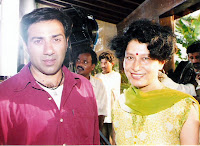Delhi is the political capital, but Mumbai (Bombay)
is the undisputed financial capital of India.
It also has Bollywood, India’s counterpart of Hollywood,
the world of Hindi films and glamour.
It has the largest port in India.
Mumbai is also the head quarters of all major banks, financial institutions and industrialists.
The Mumbai Stock Exchange is one of the leading stock exchanges in the world.
History

Mumbai originally consisted of seven islands - Colaba, Mazagaon, Old Woman’s Island, Wadala, Mahim, Parel, and Matunga-Sion.
These islands formed part of the kingdom of Ashoka, the famous Emperor of India.
Over the years, these islands have been joined together by a series of reclamations.
Bombay Stock Exchange
The Bombay Stock Exchange was established in 1875 as “The Native Share and Stockbrokers Association”.
In the early days, business was conducted under the shade of a banyan tree in front of the Town Hall in the Horniman Circle Park.
Today, the fully computerized Bombay Stock Exchange is located in the 28 storey Phiroze Jeejeebhoy Towers built on the land which was acquired in 1928.
Today, the fully computerized Bombay Stock Exchange is located in the 28 storey Phiroze Jeejeebhoy Towers built on the land which was acquired in 1928.
Sightseeing
The Marine Drive, or Queen’s Necklace - a beautiful, brilliantly lit, curving road on the sea face. It was built on land reclaimed from Back Bay along the Arabian Sea. A lot of Indian movies are shot here.
On one end of Marine Drive is the Chowpatty Beach which overlooks a calm and quiet bay. The area turns into a fun fair at night with vendors, pony rides, fortune tellers, performing monkeys, and families out for a stroll. You can also do some water sports here.
On the far end of Marine Drive is Nariman Point, the hub of commercial activities and the most expensive location in India.
On one end of Marine Drive is the Chowpatty Beach which overlooks a calm and quiet bay. The area turns into a fun fair at night with vendors, pony rides, fortune tellers, performing monkeys, and families out for a stroll. You can also do some water sports here.
On the far end of Marine Drive is Nariman Point, the hub of commercial activities and the most expensive location in India.

The Flora Fountain at Hutatma Chowk, built in 1869, is the old centre of commercial activities. You can buy some good second hand books from the book sellers here.
The stately Rajabai Clock Tower on the ornamented building of the Mumbai University is visible from afar.
The University is one of the finest educational institutions in the world.
The imposing High Court building next to the University, built in the Neo-Gothic style, is an architectural delight.
The imposing High Court building next to the University, built in the Neo-Gothic style, is an architectural delight.
The Gothic Victoria Terminus (now renamed Chhatrapati Shivaji Terminus), the main railway terminus of the Central Railway, will transform you back into the British Era.
Crawford Market, or what remains of it today, where you could once buy fruits, vegetables, meat, grocery and pets of all kinds.
The Prince of Wales Museum with its huge white dome, inspired by the Gol Gumbaz of Bijapur, houses an impressive collection of artefacts from Elephanta Island, Jogeshwari Caves, terracotta figures from the Indus Valley, ivory carvings, statues and a large collection of paintings and miniatures.
The National Gallery of Modern Art where you can see the works of Indian masters as well as modern Indian art.
The Nehru Planetarium where you can explore the mysteries of the cosmos and outer space.
The Gateway of India built in 1911, to commemorate the visit of King George V and Queen Mary to India, in the 16th century architectural style of Gujarat. From here, you can take a ferry to visit the Elephanta Caves.
Temples, Mosques and churches
Mumbai is a truly cosmopolitan city. You can visit the extremely popular Haji Ali mosque; the highly revered Mahalakshmi (Goddess of Wealth) Temple; the Sidhi Vinayak Temple; the Parsi Tower of Silence and the several Zoroastrian Fire Temples; the Mount St Mary’s Church, Aloysius Church, Mahim Church and St Thomas’ Cathedral churches, and many more places of worship.
Elephanta Island
Once upon a time Elephanta Island - an hour’s journey by boat from Mumbai - was the capital of a powerful coastal kingdom.
When the Portuguese captured the island, they named it Elephanta after a monolith elephant they found on the island. The monolith has been removed and can now be seen in the Bombay Museum.
The Portuguese used the island for military exercises. In the process, they damaged and destroyed many sculptures there.
You can travel to the island by ferry. On the island are beautiful ancient caves carved out of solid basalt rock during the 3rd or 5th centuries.
You can travel to the island by ferry. On the island are beautiful ancient caves carved out of solid basalt rock during the 3rd or 5th centuries.
Accomodation
Mumbai is an expensive city. Hotels are expensive. Ascertain the tariff before hand and make advance reservations especially if you are coming during the peak periods of October to December.
Best time to visit
The summers are hot.
The rainy season - July to September can really be dripping with rain.
The months of October to March are reasonably good.
There are plenty to places around Mumbai where you could spend a few days.
So keep a few days to spare.
My views
I live in Mumbai. It is a very crowded and congested city.
What is really surprising about the city is that every one and every thing
seems to be in a hurry.
It is said Mumbai is a city which never sleeps.
And Mumbai has its moods - which change like human moods change.


No comments:
Post a Comment